In 1184, city leaders in Toulouse, France, introduced some of the first documented measures to oversee the sale of meat: profit for butchers was limited to eight per cent; the partnership between two butchers was forbidden; and, selling the meat of sick animals was forbidden unless the buyer was warned.
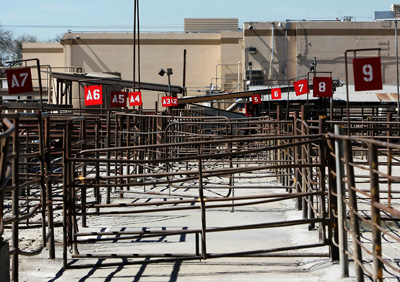 By 1394, the Toulouse charter on butchering contained 60 articles, 19 of which were devoted to health and safety.
By 1394, the Toulouse charter on butchering contained 60 articles, 19 of which were devoted to health and safety.
As outlined by Madeleine Ferrières, a professor of social history at the University of Avignon, in her 2002 book, Sacred Cow, Mad Cow: A History of Food Fears, the goal of regulations at butcher shops — the forerunners of today’s slaughterhouse — was to safeguard consumers and increase tax revenues. Animals from the surrounding countryside were consolidated at a single spot — the evolving slaughterhouse, originally inside city walls — so taxes could be more easily gathered, and so animals could be physically examined for signs of disease.
It’s no different today: slaughterhouses are common collection points to examine animals for signs of disease and to collect various levies.
In early 2008, the Humane Society of the United States released video documenting animal abuse at Hallmark/Westland Meat Packing Co. of Chino, Calif., secretly shot by an undercover employee.
That $100-million-a-year company does not exist anymore – brought down by someone using an over-the-counter video recording device.
At the time, I wrote the U.S. Department of Agriculture — unlike 12th century France — had access to that same video technology. Producers and processors who say their food is safe should be able to prove it. Producers and processors who say they treat animals humanely should be able to prove it. Government should be able to use technology to do their jobs.
In April 2008, Dr. Richard Raymond, the then undersecretary for food safety at USDA, told a House subcommittee that USDA had enough food inspectors after hiring more than 190 the previous year and videotaping meat plant operations would be costly and practically difficult to implement, adding, "It’s not as simple as a camera," and that the agency was "not stretched too thin."
But when an outbreak or recall happens, the USDA types, or any other regulatory types, don’t lose their jobs. It’s the producers, processors and employees who lose money – and their jobs.
In April 2009, Cargill Beef announced it had implemented a third-party video-auditing system that would operate 24 hours a day at its U.S. beef plants to enhance the company’s animal welfare protection systems. All of Cargill’s U.S. plants were expected to have the program in place by the end of 2009.?
Now Cargill has announced its expanded remote video auditing program will monitor food-safety procedures within processing plants.
Cargill already is using RVA to monitor animal well-being practices and is completing the technology installation at its 10 beef-harvest facilities in North America. Based on the positive results in the animal well-being area, Cargill officials decided to extend the RVA technology to monitor food-safety practices and is piloting that portion of the project at beef facilities in Fresno, Calif. and Milwaukee, Wis.
Mike Siemens, Cargill leader of animal welfare and husbandry, said,
“The early results with our animal welfare program have been terrific and we’re excited to get all the facilities up-and-running on the program. Cargill has been able to use the RVA technology to help increase an already superior compliance rate at its plants to an even higher level. In addition to the positive results on compliance rates, we have observed healthy competition among plants on performance scores, as well as a general theme of collaboration among plants on how to attack specific operational challenges. The ability to share data and video easily is extremely valuable.”
 For the food-safety pilot, RVA will be used to review stages within the process where workers clean and sanitize their knives and other equipment.
For the food-safety pilot, RVA will be used to review stages within the process where workers clean and sanitize their knives and other equipment.
Additionally, Cargill will apply the technology to monitor dressing procedures to ensure proper techniques are followed to reduce the potential for E.coli and Salmonella contamination.
Angie Siemens, Cargill technical services vice president for food safety and quality, said,
“We’re working to eliminate the opportunity for cross-contamination. We want to have the right steps at the beginning of our process to enhance the efficacy of our intervention technologies later in the process. The major objective of the video auditing application is to design a ground-breaking program that can further reduce the E. coli and Salmonella contamination.”
If bars can figure out how to advantageously use video technology, so can slaughterhouses and processing facilities. Someday maybe even USDA will go beyond the inspection techniques of 12th century France.

.jpg) police spokeswoman said.
police spokeswoman said.

 provide taxpayer-funded information, and figure out the most effective way to provide such information, rather than being the politician or group that says, “no.”
provide taxpayer-funded information, and figure out the most effective way to provide such information, rather than being the politician or group that says, “no.” proprietary or confidential information. However, the committee concluded that while adverse impacts are possible, there is limited systematic evidence documenting their likelihood.
proprietary or confidential information. However, the committee concluded that while adverse impacts are possible, there is limited systematic evidence documenting their likelihood. 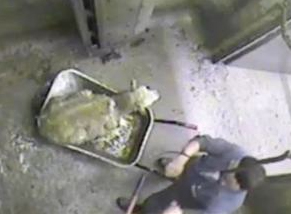 plants to enhance the company’s animal welfare protection systems. All of Cargill’s U.S. plants were expected to have the program in place by the end of 2009.
plants to enhance the company’s animal welfare protection systems. All of Cargill’s U.S. plants were expected to have the program in place by the end of 2009.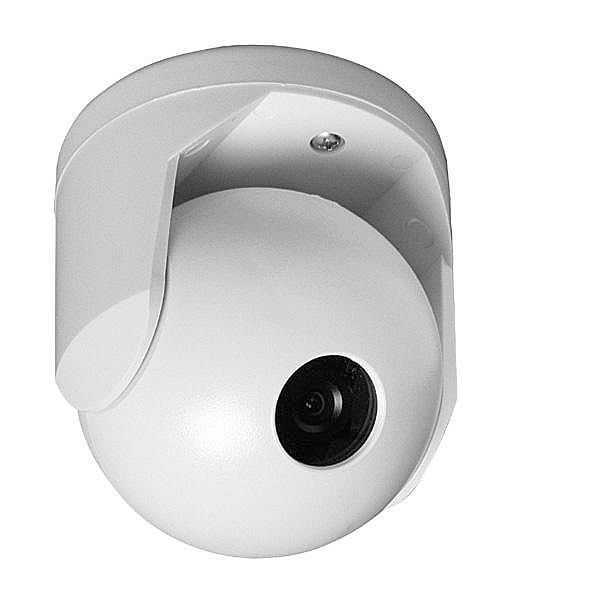 slaughter when animals are not stunned. "The likelihood of a stunned animal being conscious is extremely small," said its veterinary officer Stephen Lomax. "This is not an animal welfare issue."
slaughter when animals are not stunned. "The likelihood of a stunned animal being conscious is extremely small," said its veterinary officer Stephen Lomax. "This is not an animal welfare issue." operations by using in-plant video monitoring.
operations by using in-plant video monitoring. Meat Packing Co. of Chino, Calif., tormenting cows that were too injured or weak to stand.
Meat Packing Co. of Chino, Calif., tormenting cows that were too injured or weak to stand.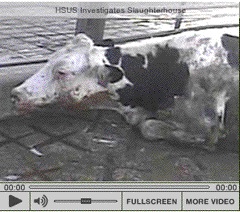 Animal Aid in the last year had highlighted abuses in U.K. slaughterhouses. The proposal is due to go before agency chiefs next week for approval.
Animal Aid in the last year had highlighted abuses in U.K. slaughterhouses. The proposal is due to go before agency chiefs next week for approval..jpg) to reopen in two weeks provided they are cholera-free and the owners can show their meat comes from hygienic sources.
to reopen in two weeks provided they are cholera-free and the owners can show their meat comes from hygienic sources.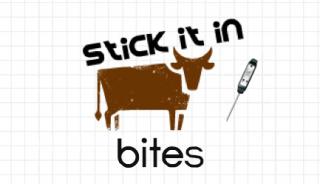
 It’s the Thursday morning before the long-weekend carnivorous orgy known as Memorial Day, so of course there are media accounts of meat:
It’s the Thursday morning before the long-weekend carnivorous orgy known as Memorial Day, so of course there are media accounts of meat: .jpg) unsafe slaughterhouse practices, letting suspect operations continue despite public health risks.
unsafe slaughterhouse practices, letting suspect operations continue despite public health risks..jpg) CBS Radio called about 5 a.m. for comment – they’re so polite, they always e-mail first to see if I’m awake so they don’t wake the household. As soon as I said, yeah, let’s do it, 1-year-old Sorenne awoke so I missed the first call to change a diaper and provide 8 ounces of milk. But, the reporter at CBS in N.Y. agreed it was a good call, kid first, then radio soundbites, in which I said something along the lines of, I don’t know anything about the specifics of these cases, but the best slaughterhouses won’t be held hostage by a dude with a video camera, and will get way, way out in front of the minimal standards required by USDA. Maybe it’s too early and I’m still dreaming.
CBS Radio called about 5 a.m. for comment – they’re so polite, they always e-mail first to see if I’m awake so they don’t wake the household. As soon as I said, yeah, let’s do it, 1-year-old Sorenne awoke so I missed the first call to change a diaper and provide 8 ounces of milk. But, the reporter at CBS in N.Y. agreed it was a good call, kid first, then radio soundbites, in which I said something along the lines of, I don’t know anything about the specifics of these cases, but the best slaughterhouses won’t be held hostage by a dude with a video camera, and will get way, way out in front of the minimal standards required by USDA. Maybe it’s too early and I’m still dreaming. By 1394, the Toulouse charter on butchering contained 60 articles, 19 of which were devoted to health and safety.
By 1394, the Toulouse charter on butchering contained 60 articles, 19 of which were devoted to health and safety.  For the food-safety pilot, RVA will be used to review stages within the process where workers clean and sanitize their knives and other equipment.
For the food-safety pilot, RVA will be used to review stages within the process where workers clean and sanitize their knives and other equipment.  that 102 dead goats and boxes of organs had mysteriously disappeared in transit, the state says.
that 102 dead goats and boxes of organs had mysteriously disappeared in transit, the state says..jpg)